THIS YEAR’S CULTURAL THEMES
EFBA’s summer camps in French are unique. We offer a rare opportunity for children to experience an unforgettable vacation in French in the San Francisco Bay Area. We want the children to become bilingual, biliterate and bicultural. Every week, we come up with a new theme. We invent stories to teach culture, history, geography and literature through a lived adventure.
For non-French speakers, different tools and especially auditory and visual aids are used to ensure that the child feels comfortable in the French-language immersion context.
Week 1 | The Ancient Forgotten City
June 9 to 13
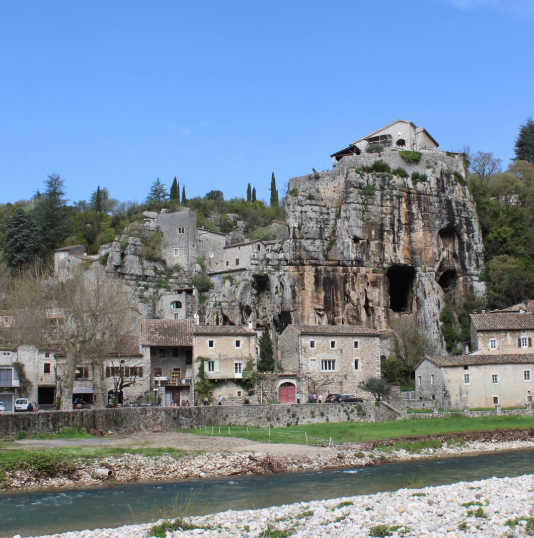
Week 1 | The Ancient Forgotten City
Story of the Week:
Let’s set the scene: it’s 1994 in Ardèche, a city in the South-East of France. The famous archeologist Évelyne Geneste needs help solving a fascinating mystery. Clues discovered close to Pont d’Arc suggest a forgotten cave, concealing prehistoric paintings left by the first humans. But the cave seems to be protected by ancient mysteries, and only curious and brave souls can uncover its secrets. For a week, our young explorers will uncover the secrets of our ancestors and join forces to piece together a hidden treasure. Get ready to dive into the fascinating world of the Chauvet Cave!
Cultural Focus : The Chauvet Cave, discovered in 1994 in Ardèche (in the southeast of France) close to Pont d’Arc, contains the oldest known cave paintings, dating back more than 36,000 years. These frescoes depict cave lions, mammoths and horses, and are a testimony to the artistic talent of the first humans. Though the real cave is closed to the public to preserve this treasure, a replica called the Cave of Pont d’Arc allows visitors to discover this prehistoric marvel. Ardèche, with its spectacular natural landscapes, is a real journey through time!
Week 2 | The Legendary Dodo of Mauritius
June 16 to 20 (No Camp on June 19)
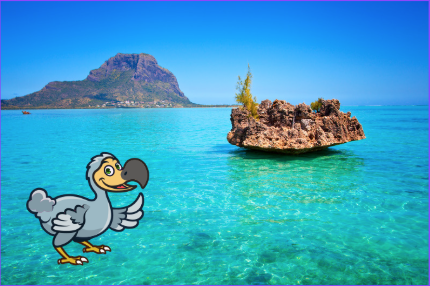
Week 2 |The Legendary Dodo of Mauritius
Story of the Week:
Long, long ago, the dodo, the iconic bird of Mauritius, disappeared. But an ancient legend suggests that a magical dodo survived, hidden in the most secret recesses of the island. It is said that for centuries, it has watched over a mysterious precious pearl, a symbol of harmony, prosperity, and the very soul of the island.
But a terrible event disturbs this fragile balance: the island begins to lose its colors, magic and vitality. The pearl seems threatened, and the balance of nature and Mauritian traditions seem to be in danger as well. The people, distraught, put out a call for help.
A group of young explorers will embark on this thrilling adventure. Their mission: uncover the mystery of the mythical dodo. Does it really exist? Is the precious pearl still under its protection? Their quest, full of mysteries and discoveries, will determine if the island’s harmony can be restored. The fate of the island is in their hands…
Cultural Focus : The dodo, the iconic bird of Mauritius, was a large, flightless bird, native to the island. It was discovered by European sailors in the 16th century, and disappeared about a century later because of intensive hunting and new species introduced by the colonists. While it went extinct, it is still an iconic symbol of the island, embodying its natural heritage and the need to preserve biodiversity.
Mauritius, an island in the Indian Ocean, is a former French colony (1715-1810) before it was taken over by the British. It became independent in 1968. The French language has endured because it is used in institutions, culture and media, even if English is now the official language. The island’s rich multicultural heritage has been marked by African, Indian, European, and Asian influences.
Week 3 | The Strange Disappearance of Eleanor of Aquitaine’s Necklace
June 23 to 27

Week 3 | The Strange Disappearance of Eleanor of Aquitaine’s Necklace
Story of the Week :
The year is 1152, in the heart of Aquitaine, in the southwest of France. The duchess Eleanor of Aquitaine, renowned for her intelligence and strategic spirit, must protect her most precious belonging: a mysterious necklace, given to her by her father, a symbol of the wealth and power of Aquitaine. But then, disaster strikes! The necklace disappeared the day before her marriage to Henry II, future King of England.
Eleanor needs young investigators to help her solve the mystery. It’s time for an extraordinary Medieval adventure!
Cultural Focus: Eleanor of Aquitaine (1122-1204) was one of the most influential women in Medieval history. Born the Duchess of Aquitaine, she became the Queen of France and then the Queen of England. Her political and cultural role was monumental: she sponsored minstrels, and played a key role in trade between France and England. Her court was a cultural center where arts and poetry flourished.
Her region of Aquitaine was one of the richest and most powerful duchies of the time, and was famous for its wine, chateaus and magnificent landscapes. Eleanor is a symbol of female leadership in an era dominated by men.
Week 4 | The Hidden Treasure of Tin Hinan
June 30 to July 3 (No Camp on July 4)
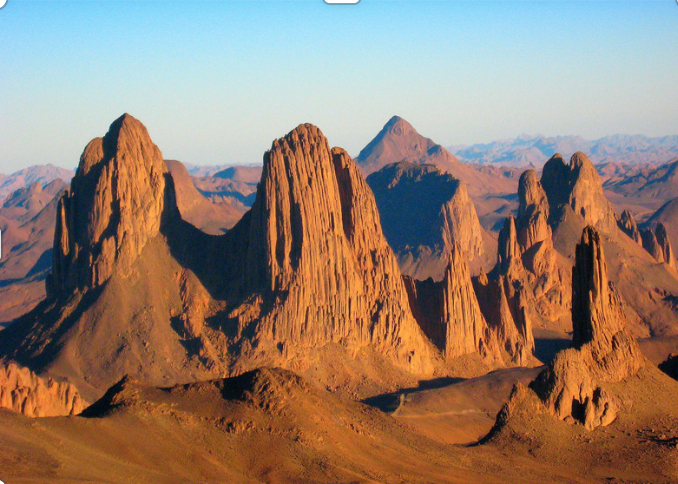
Week 4 | The Hidden Treasure of Tin Hinan
Story of the Week:
In the vast Algerian Sahara, a strange desolation has overtaken the land. The oasis is drying up, the dunes are encroaching onto the villages and the iconic animals of the desert are slowly disappearing. The region, once a source of life and harmony, seems to be in danger. It is said that an ancient curse has awoken because the treasure of Tin Hinan, a symbol of the balance between humans and nature, has been forgotten.
A group of young explorers will begin an exciting adventure through iconic landscapes of the Algerian Sahara: the majestic Hoggar mountains, the green oases and mysterious cave engravings of the region.
By finding the traces of Queen Tin Hinan’s treasure, the legendary “Mother of the Tuaregs”, they can restore the balance of the Sahara and show that the future of the desert rests on wisdom and respecting nature.
Cultural Focus : Tin Hinan is a symbol of Tuareg culture, a nomadic people in the Sahara. The Tuaregs are known for their mastery of the desert and their rich cultural heritage, notably their language (Tamasheq), their ancient alphabet (Tifinagh) and their poetry. The tomb of Tin Hinan, near Abalessa, is a historic place that bears witness to the grandeur and complexity of Saharan civilizations.
Week 5 | Mystery at the Museum: Marc Chagall’s Goat is Missing!
July 7 to July 11

Week 5 | Mystery at the Museum: Marc Chagall’s Goat is Missing!
Story of the Week:
During an exceptional exhibition of Marc Chagall’s works at the New Orleans Museum of Art, the famous blue goat of “Moi et le Village” (English: I and the Village) mysteriously disappeared from the painting! Chagall, a French and Russian artist known for his colorful artwork and poetry, could never have imagined such a mystery.
Participants will put on their detective hats, grab their paintbrushes and explore the magical world of Chagall’s paintings to unlock their secrets. Between hidden clues and hoof prints, they must uncover this captivating mystery. Where did the goat go? Why did it leave the painting? The suspense is thrilling, and the adventure is sure to be as artistic as it is unforgettable!
Cultural Focus : Marc Chagall (1887-1985) was a French and Russian painter, and one of the great artists of the 20th century. Born in Belarus, he was inspired by his childhood, Jewish folklore, and the landscapes of his region to create a dream-like world. His works of art, like “Moi et le Village”, mix dazzling colors, floating characters and fantastic animals.
He later settled in Paris, and influenced modern art with his paintings, stained-glass windows, and monumental works, like the ceiling of Palais Garnier. Chagall celebrates life, love, and the imagination, making him an essential figure in the art world.
Week 6 | Mission: Save Carnival!
July 14 to 18

Week 6 |Mission: Save Carnival!
Story of the Week:
Just a few days before Carnival in Martinique, disaster strikes the island: all the costumes mysteriously disappeared! Without them, the celebration cannot go on, and the joy of Carnival seemed doomed. But not all is lost! An old tamboril player (a traditional instrument) will entrust participants with a series of clues left by a mischievous spirit of Carnival.
Our young investigators must explore the iconic places on the island—from black sand beaches to the heart of colorful markets—to solve mysteries and find the costumes. Their mission: bring together all of the costumes in time for the big parade!
Cultural Focus: Carnival in Martinique, celebrated every year in February or March, is one of the most important cultural events on the island. It mixes European and African influences, showing the influence of colonization and highlighting the complex history of Martinique. For several days, the island comes alive to the beat of the tambourine, Creole songs, and colorful costumes. Each character in Carnival has a specific meaning. King Vaval, an iconic figure, embodies the spirit of Carnival and is burned during the final day to mark the end of the festivities. The Red Devils and other spirited creatures symbolize satire and role reversal. Carnival is a celebration of joy, freedom, and the Martinican cultural identity, where music, dance, and creativity are interwoven to light up the island.
Week 7 | Rescue the Little Prince!
July 21 to 25
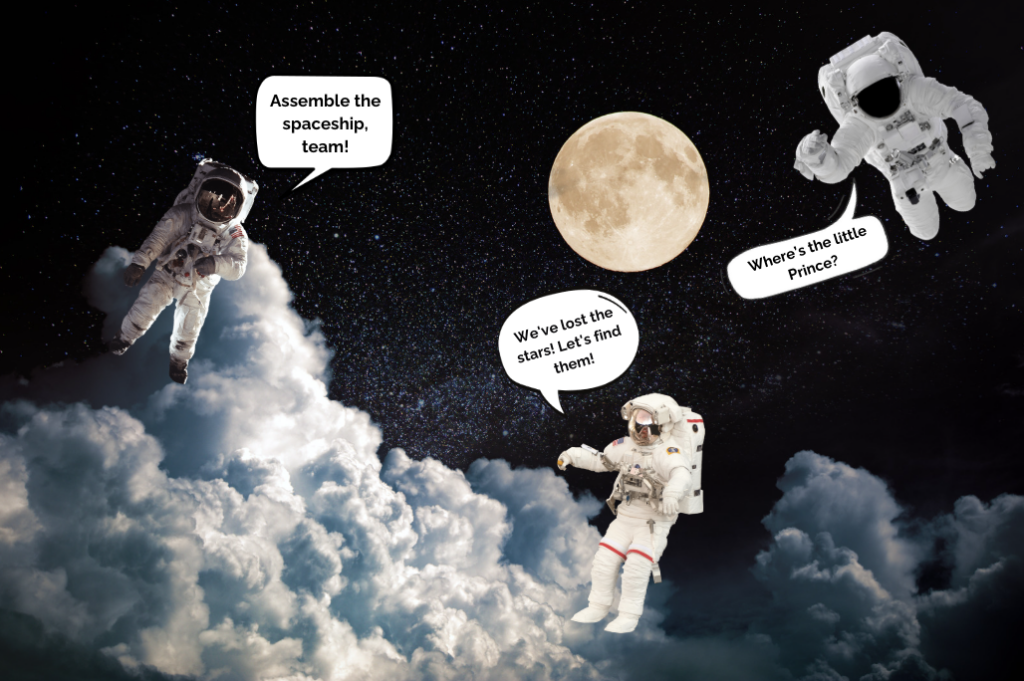
Week 7 | Rescue the Little Prince!
Story of the week:
Terrible news has shaken the world: the Little Prince is stuck in space, and after an accident, he has unintentionally captured all of the stars, plunging the universe into darkness! Without the stars to light his path, the Little Prince is lost on an unknown planet.
On Earth, astronomers have revealed a secret: a magical space ship, able to travel at lightning speed, has existed for centuries. But it has been taken apart and its pieces are scattered all over France. Participants’ mission is essential: find all of the pieces of the ship while uncovering the mysteries of the universe. It’s possible that as they put the pieces together, the secrets of some French regions are also revealed. Will they be able to rescue the Little Prince and restore the twinkle to the stars?
Cultural Focus : The Little Prince, written by Antoine de Saint-Exupéry in 1943, is one of the most translated books in the world. This poetic story recounts the adventures of a little boy from the B 612 asteroid. Through his journeys in the universe, he meets people who represent the quirks and beauty of human nature.
Antoine de Saint-Exupéry, a French pilot and writer, was inspired by his own life to create this universe. The story reflects his love of the stars and journeys, but also a real event in 1935, when he crashed his plane in the Sahara.
One of the most famous quotes from the book, “One sees clearly only with the heart. What is essential is invisible to the eye.”, invites the reader to reflect on what is really important in life: friendship, love, and curiosity. The Little Prince is a timeless classic, just as moving for children as it is for adults.
Week 8 | Houba! Tracing the Tracks of Marsupilami
July 28 to August 1
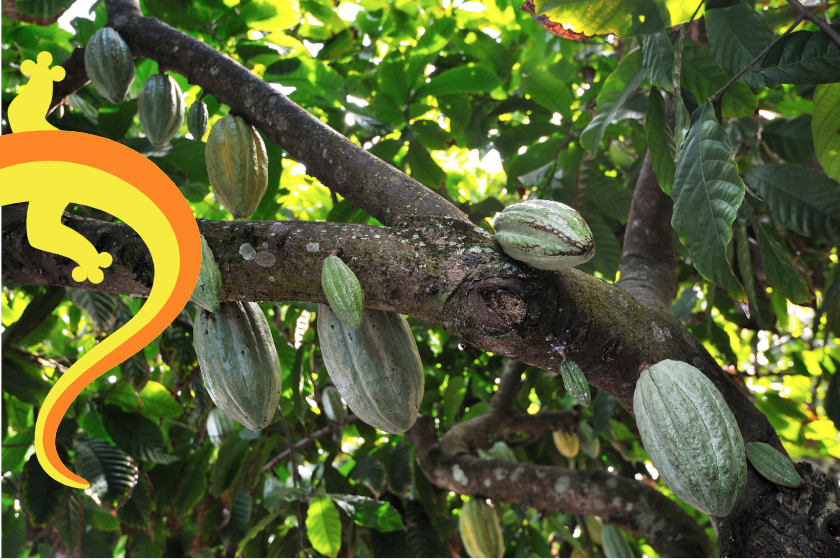
Week 8 | Houba! Tracing the Tracks of Marsupilami
Story of the Week:
In the forests of Guyana, a mysterious creature is causing trouble: it jumps, plays tricks, and leaves behind traces of cocoa. The intrigued people sometimes see a long yellow tail with black spots disappearing into the trees. Is it the Marsupilami, the mythical creature who is said to protect the forest? To follow his tracks, young adventurers must help the local people to explore Guyana’s lush forests and follow the clues left by this strange creature. The investigation is sure to be thrilling!
Cultural Focus: The Marsupilami, created in 1952 by the Belgian author André Franquin, is an iconic character of French and Belgian comics. He first appeared in the Spirou & Fantasio series, where his unique appearance—his spotted yellow fur and long, nimble tail—and his mischievous nature captivate readers. Thanks to his success, he then had his own series of comics, where he explores his imaginary environment, the jungle of Palombia. A symbol of humor and adventure, he shows the connectedness of biodiversity and the imagination of tropical ecosystems. Even though he is best known in France and Belgium, he is still an example of the cultural influence of French and Belgian comics.
